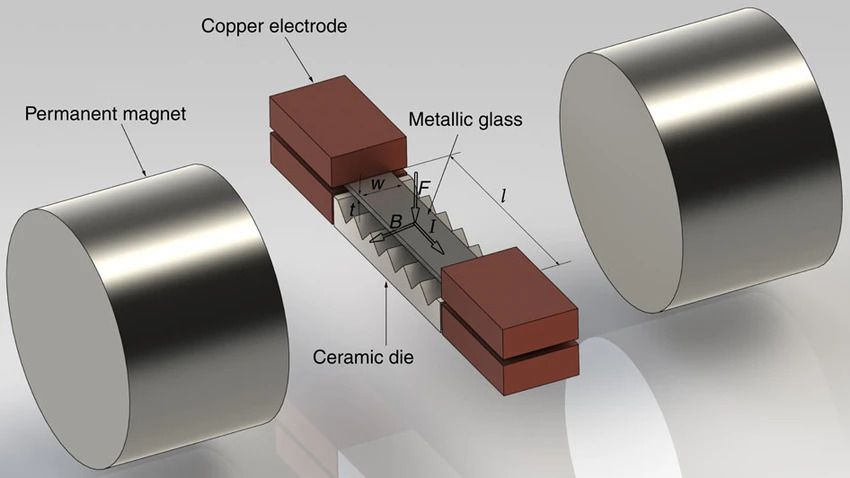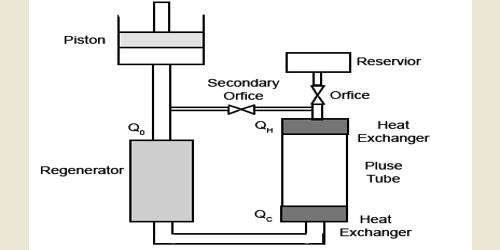Electromagnetic forming (EMF) is a high-velocity, cold-forming method for electrically conductive metals, most notably copper and aluminum. It is a high-speed forming method that uses electromagnetic forces to shape metals. Unlike traditional forming methods such as stamping or forging, which rely on mechanical force, electromagnetic forming uses magnetic fields to provide the force required to shape the workpiece.
High-intensity pulsed magnetic fields reshape the workpiece by inducing a current and a matching repulsive magnetic field, which rapidly repels sections of the workpiece. The workpiece can be reshaped without using a tool, though in some cases it may be crushed against a die or former. The technique is also known as high-velocity forming or electromagnetic pulse technology.
How generally works –
- Setup: A capacitor bank is charged to a high voltage, typically several kilovolts. This capacitor bank will discharge through a coil to generate a strong magnetic field.
- Coil and Workpiece: A coil or a set of coils is placed around the workpiece. When the capacitor bank discharges, a high current flows through the coil, generating a magnetic field around it.
- Magnetic Field Interaction: The magnetic field induces a strong current (eddy currents) in the workpiece due to Faraday’s law of electromagnetic induction. These eddy currents create their own magnetic fields that interact with the coil’s magnetic field.
- Force Generation: The interaction between the coil’s magnetic field and the eddy currents in the workpiece generates a Lorentz force. This force pushes or accelerates the workpiece, causing it to deform or shape according to the die or mold.
- Forming: The high-velocity deformation caused by the Lorentz force allows for rapid shaping of the workpiece. The process can produce complex shapes with high precision and without the need for extensive tooling.
Advantages –
- High Forming Speed: EMF is a high-speed forming process, making it suitable for mass production.
- Complex Shapes: It can form complex and intricate shapes that might be difficult or costly to produce using traditional methods.
- Uniform Deformation: Due to the electromagnetic forces, deformation can be more uniform compared to mechanical forming methods.
- Reduced Tooling Costs: Since there’s no direct contact between the tooling and the workpiece, wear and tear on the tools are reduced, leading to longer tool life.
Applications –
- Automotive Industry: Forming of car body parts, engine components, and other vehicle parts.
- Aerospace: Production of aircraft components and structural parts.
- Consumer Electronics: Manufacturing of casings, enclosures, and other components.
- Medical Devices: Forming of medical equipment and implants.
In summary, electromagnetic forming is a versatile and efficient manufacturing process that offers advantages in terms of speed, precision, and flexibility. Its applications span across various industries where high-speed, complex forming is required.
















